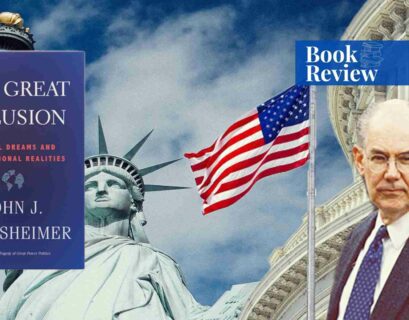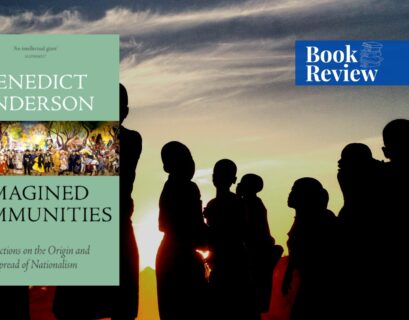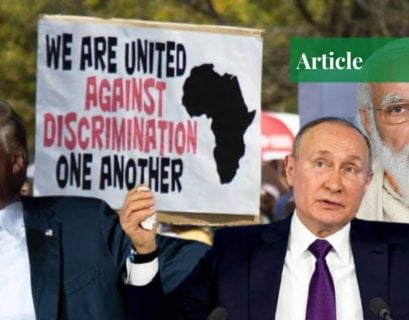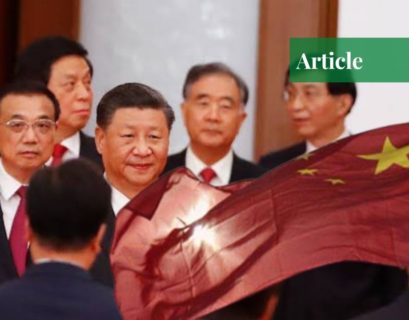Hafsa Ammar is a graduate of the National Defence University, Islamabad. Her areas of expertise are narrative building and propaganda warfare, centered around the Soviet Union and modern-day Russia.
Introduction
A theory of sociology that aims to explain the formation of an industrial society intertwined with the rise in modernity is known as modernism. It is denied by the scholars of primordialism who state that nationalism is historic, universal, and remains evermore in continuity. Where primordialism says that nationalism has existed since the beginning of time, modernism goes forth to negate that concept by saying that the establishment of a nation is a direct result of the social, political, and economic evolution of the international system, making it a relatively recent concept.
Coming to life in the 1960s, modernism caught wind in the continents of Asia and Africa when decolonization and independence movements were on the rise. The rise of national movements was running parallel to industrialization and material progress in the world which led the leading scholars of this school of thought to establish a link between the two. The said link is vertical through history and horizontal through industrialized associations.
It is said that nations are not just a result of modernization, but rather that they became a socio-biological and structural necessity. The major rise of modernism can be witnessed in the aftermath of the French Revolution of 1789 which then fully peaked in the 1950s.
The modernist process includes the phenomenon of capitalism, industrialization of the third world, urbanization, and globalization. All of these are part and parcel of the evolving world and therefore come with distinct challenges for every budding nation and nationalist movement. Each type/area of modernism has been seen tackling these issues within the gambit of socio-political allowances granted to the respective states.
Categories of Modernism
Economic Transformation
Neo-Marxist scholars put in their two cents when they identify factors of unrest and frustrations in the global population of developing countries during the late 1960s. They claim that Marxism in its original form was not a good fit for the economic disparities of that time. Anti-imperialist and decolonization movements were on the rise contributing to both a hope for peace and unintentional national instability.
While modernism refers to development, there are inconsistencies within development as well. Tom Nairn, a Scottish political theorist, was able to highlight these issues by introducing even and uneven development. Nairn talks about how development in the modern world was thought to be interconnected and the ‘core’ states or the Western European developed world were to be seen as the capitalist leaders, while the peripheries (developing and underdeveloped states) would only have to follow the path laid out by the West.
However, it was not as simple as it seemed. The West raced ahead while the rest remained scrambling behind due to a lack of resources and general capabilities. This is where the steep rise of nationalism shows its face. The political elites of the developing world needed to catch up with their opponents, so they decided to take things into their own hands. To convince the masses, they invoked the spirit of nationalism and unity. They triggered an identity complex, securing support by establishing an ‘us vs them’ divide.
Political Transformation
Major academicians who have worked on political modernism are Paul Brass, John Breuilly, and Eric Hobsbawm. The spread of nationalism in the peripheries was contagious and acted inwards towards the core as well. The global norms took on another form: nationalist identification. The invention, use, influence, and manipulation of invented identities and traditions is the core thesis of Hobsbawm’s study.
During most of the 19th century, the British Empire held the reigns of the international system, but by the time WW1 rolled around, America had come into its own and became the biggest industrialist aided by its massive war economy, surpassing Britain.
This political overtake in power dynamics initiated aggressive nationalism all over the world; the most relevant example being German nationalism leading to the Holocaust. Then the USSR, China, and India entered the field. The division of global powers into the capitalist and communist blocs didn’t halt the rise of nationalism, rather it only provided them with an already set-up fund and economic structure. China and India really flourished once they tapped into the nationalist drive of their people.
Socio-cultural Transformation
The economic wildfire set by capitalism eventually invaded the socio-cultural fabric of society. Wealth became a direct indicator of class and social status, now dictating socio-economic opportunities, policy making, political representation, and labor discrimination. Where nationalism was conceived to provide a sense of unity, it became a living entity that pushed out ethnic and racial minorities when they did not fit the characteristics of the majority.
The distribution of resources and power, both social and national, was unequal and caused further degradation of society. In Pakistani households, Christian help is sought out for janitorial services even though religion has nothing to do with job requirements. This act not only separates people on religious grounds but it also exacerbates the spirit of nationalism in Pakistani Muslims. Similarly in India, the ruling BJP party has created and pushed forth narratives of Hindu nationalism which have alienated Indian Muslims.
Significance of Modernism
Modernism focuses on the ideology of nationalism and connects it to ethnic roots. It focuses on three thematic areas. The first is the pull of capitalist economies in assimilating a nation by sheer force. This is where Tom Nairn’s idea of even and uneven development takes root. Development refers to constructive progress in any field. However, the one being discussed here is of an economic and industrialized nature.
Tom Nairn says that a nation’s existence is not born from internalized dynamics rather it is aided by the development of the global economy over time. Capitalism is the leading economic worldview, and it is championed by the West which holds most of the world’s wealth. It is important to note that capital is just another dimension of power, and power is what makes the world go round.
The West has been leading the world in terms of progress both in the cognitive and industrial realms. Now it was assumed that as the West is the core, its progress will be mapped and followed by the peripheries; the peripheries in this context are the developing or underdeveloped states.
However, Western progress soon turned into domination, invasion, and intervention. This was an alarming reminder to the peripheries that if they did not match their stride to that of the West, they would either be trampled upon or enveloped in the tide. The political elites and leaders of the third world were desperate not only to develop their own states but also to protect their interests from outside intervention. They attempted to take matters into their own hands and turned the efforts of development into a nationalist cause.
The developing and underdeveloped states convinced their people to imitate the systems and structures of the developed nations but also invoked a defensive and aggressive spirit of nationalism which could be seen in the formation of a new identity. Even though the structures were copied, the political leaders demonstrated that the people came together to form a nation and made it rise from the ground up constituting everything from factories and schools to armies and judicial systems. Thus empowering nationalism in the masses.
The next theme is how the state aids in the formation of a national identity through governmental jurisdiction. Nationalism, on its own, is an aggressive ideology mainly because its end goal more often than not starts to resemble secession. A way to reform this ideology is to give it a sense of civic duty and reform it into civic nationalism.
Modernity has, as mentioned above, blessed core states more than peripheries. Now when a state has the sociological, political, or technological upper hand in world politics, so do its constituents (its citizens). American citizens get a lot more international reprieve and privileges than Nicaraguan or Cuban citizens. The need for a passport was created by modernism, and having a blue one proudly corralled the people of America into civic nationalism.
Finally, the eventuality of widespread literacy and uniform education is what glues a nation’s various communities together. Standardized education became the norm in the late 1800s following the industrial revolution. It helped unify nations through socio-economic equity under schooling, and it promoted nationalism through disseminating glorified national history.
Conclusion
Modernism deconstructs and breaks down the politics of nationalism and modernity—a consequence and its inevitability. It explains how fundamental conflict has been molded into nationalist divides more so than inter-class, lending power to states and their citizens through mere status. Although globalization is publicly perceived as an inevitable course of nature, greater focus should be paid to how the process can and is being enforced or manipulated in the developing world for political and economic gains.
If you want to submit your articles and/or research papers, please check the Submissions page.
The views and opinions expressed in this article/paper are the author’s own and do not necessarily reflect the editorial position of Paradigm Shift.


















